Audirect Beam Review
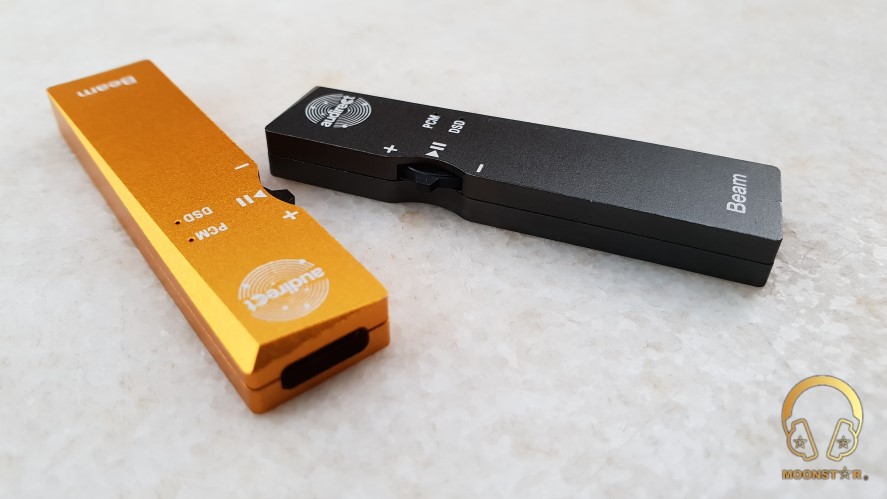
Audirect Beam Review
About Audirect:
Audirect is part of Shenzen Micronetwork Technology Co., Ltd. located in Shenzen – China and is engaged since more than 6 years in the development, production and sales of portable DAC’s and the Audirect Beam is the latest DAC / AMP of the company.
Audirect Webpage: Audirect.cc

Disclaimer:
I would like to thank Audirect for providing me a sample of the Audirect Beam DAC/AMP for review purposes. I am not affiliated with Audirect beyond this review and these words reflect my true, unaltered opinions about the product.
Price:
The MSRP Price for the Audirect Beam portable DAC/AMP is $99,00 USD
Purchase Link: https://penonaudio.com/audirect-beam-usb-dac.html
Introduction:
The Audirect Beam DAC& is a small very small sized Hi-Fi DAC and Headphone Amplifier created for people who are not satisfied with sound of their Phone, Table and onboard soundcard of their PC or Laptop.
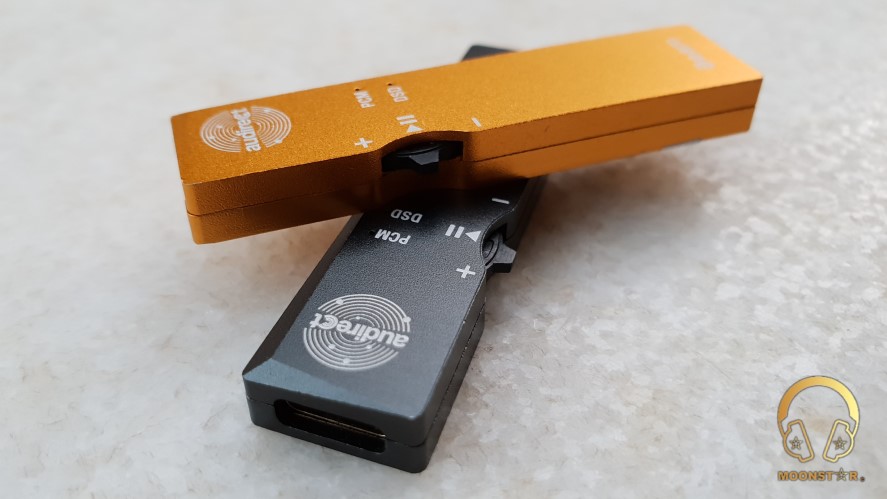
Package and Accessories:
The device comes in a relative thin and small white card-box that sports the brand and model (Beam) name. There is also a small window where you can see the Beam without to open the box. This box is including the following items;
- 1 pcs x Audirect Beam DAC&
- 1 pcs x USB 2.0 to USB Type-C OTG cable
- 1 pcs x USB Type-C to USB Type-C OTG cable
- 1 pcs x Lightning to USB Type-C OTG Cable
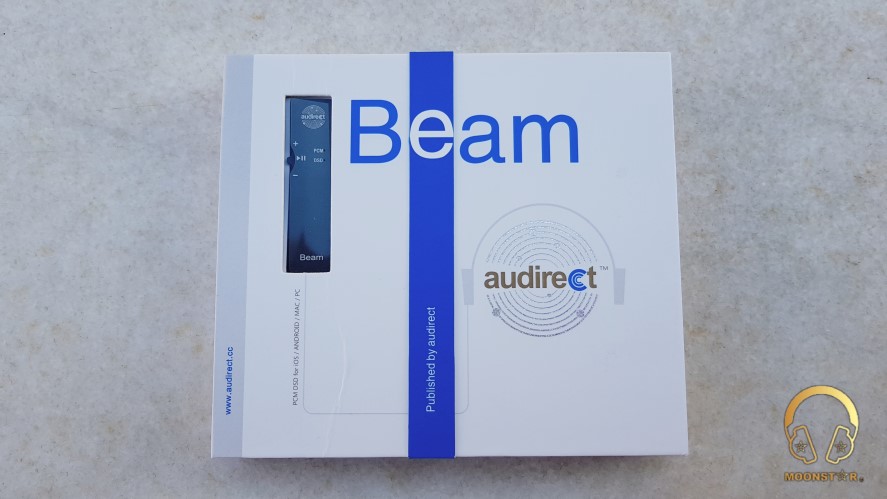
Audirect Beam has put some nice accessories in to the package with almost 3 different UBC Type-C OTG cables. Especially the Apple Lightning to USB Type-C OTG cable is a hard to find and a very nice addition in my opinion.
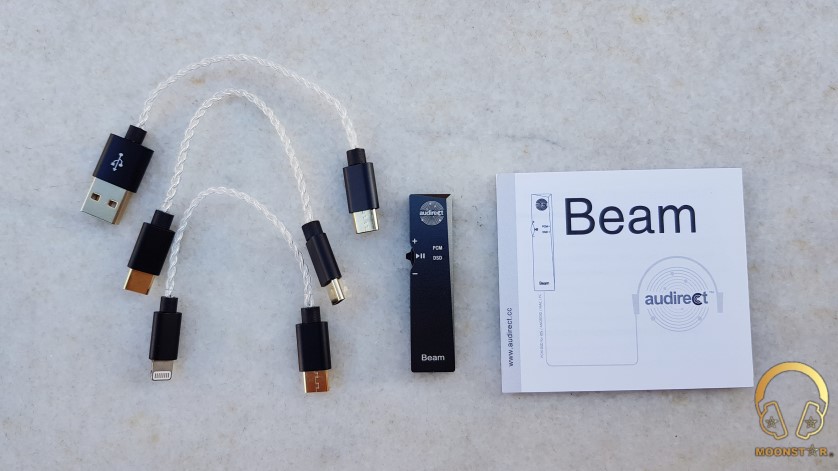
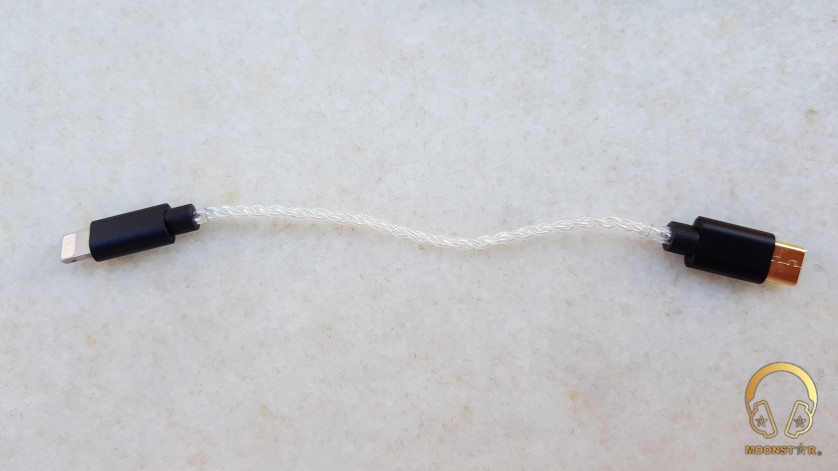
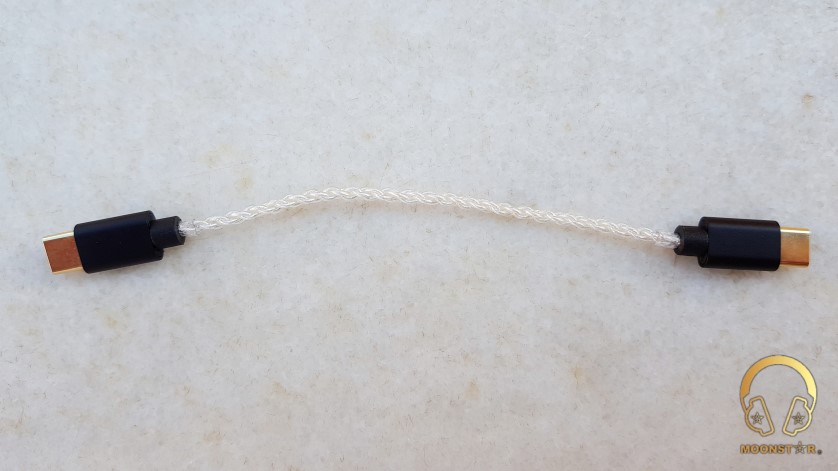

Design and Build Quality:
The Audirect Beam is a very small and lightweight device with a well made/solid metal housing, which has a dimension of 52x14x6mm and a net weight of 12g (according to Audirect specs).
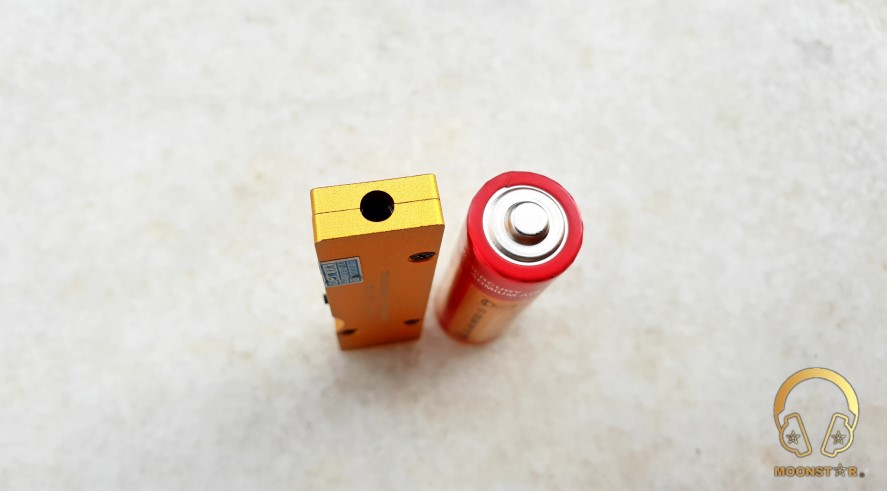
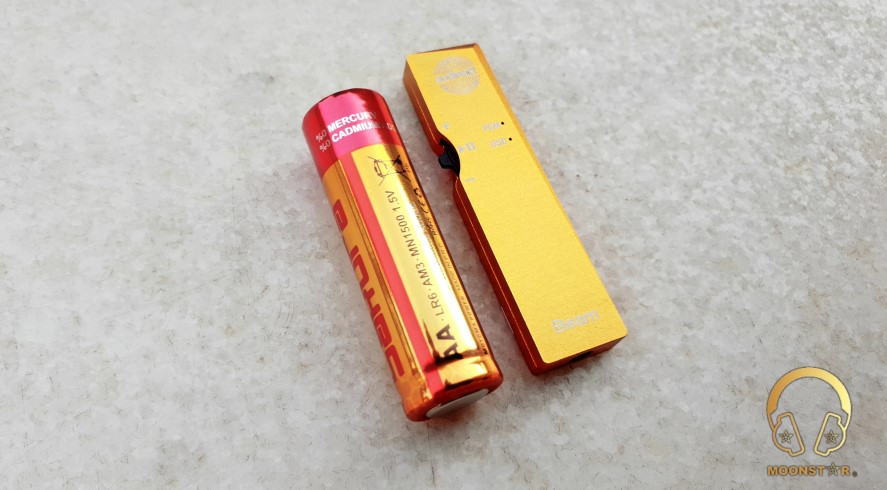
At the top is the USB-Type C female data connection.

At the bottom of the device is the 3.5mm headphone jack (unbalanced).
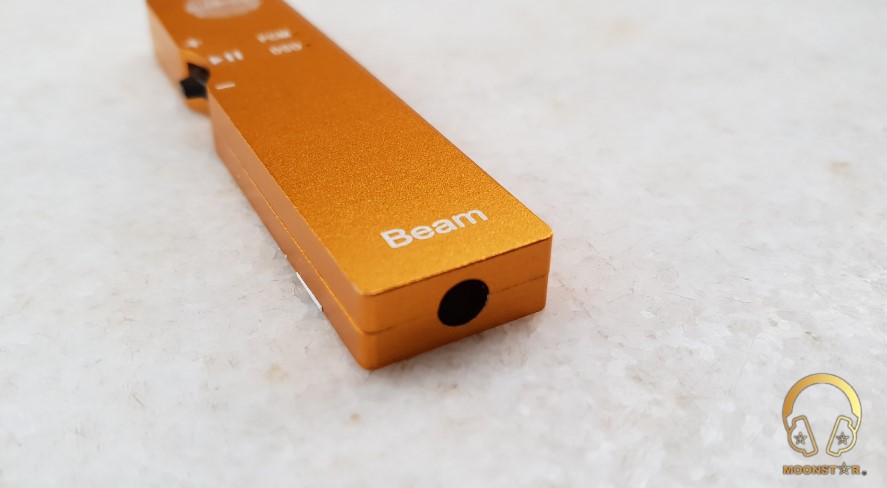
On the front of the DAC is the Audirect and the Beam logo. There are also two (2) led indicators, one for PCM and one for DSD conversation.
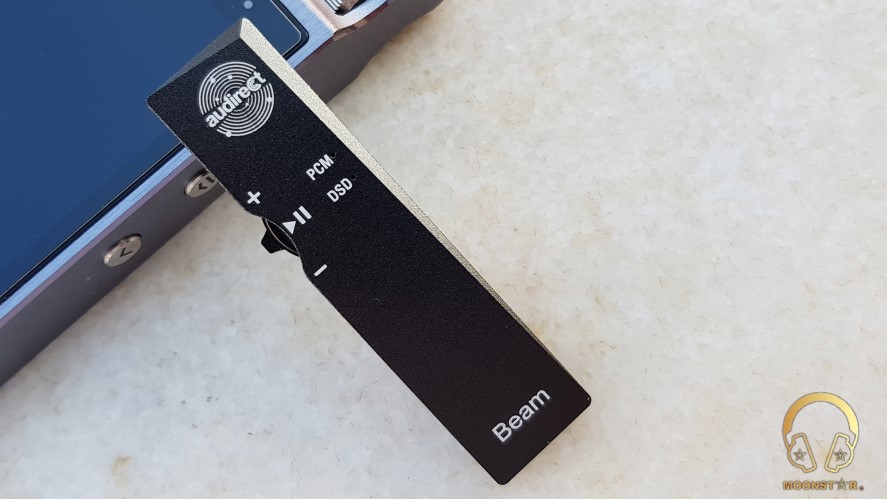
On the back of the device are four (4) screws and information like certificates/serial number.
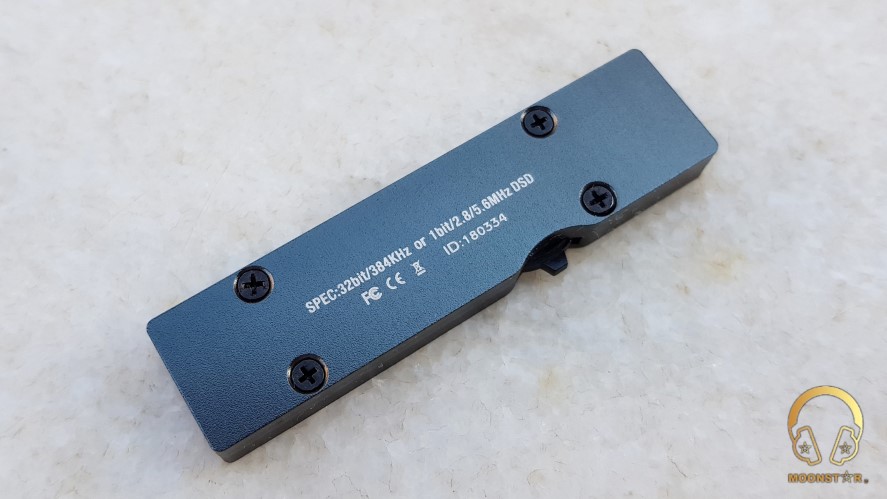
At the right side of the Beam is an action key dedicated for volume up, down and play/pause functions.
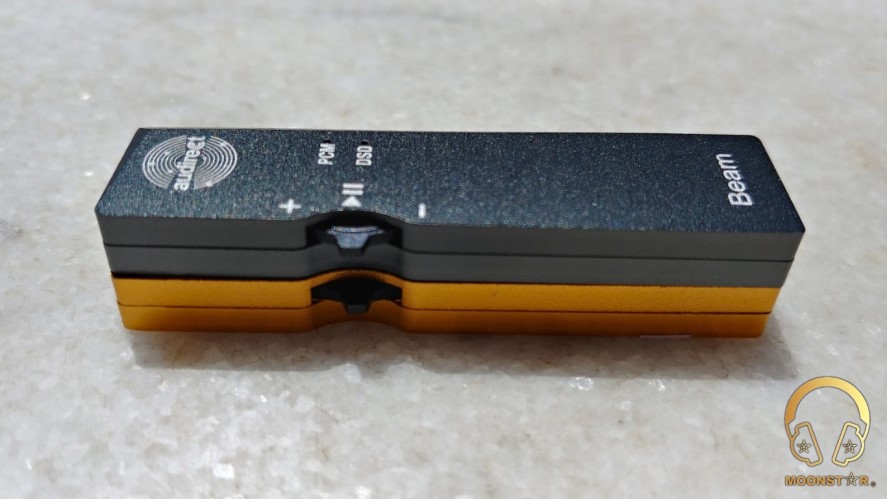
They are two color options, which are gold and grey, but my personal favorite is the one in grey color, which looks pretty nice.
- Technical Specifications:
- DAC : ES9018 HiFi SoC
- AMP : ES9018 HiFi SoC
- Output Power : -114dB TND+N, 2Vrms @ 600Ω -108dB THD+N, 49mW @ 32Ω
up to 1.1Vrms - Frequency response : 20-30000Hz (-0.15dB)
- Distortion : 0.0004%
- SNR : +125dB SNR, +120dB DNR
- PCM : PCM 16-32bit, 32-384KHz
- DSD : DoP64, DoP128, Native DSD64/128/256
- Internal resistance : <1Ω
- Input port : USB-C
- Output port : 3.5mm
- Dimensions : 52x14x6mm
- Weight : 12g
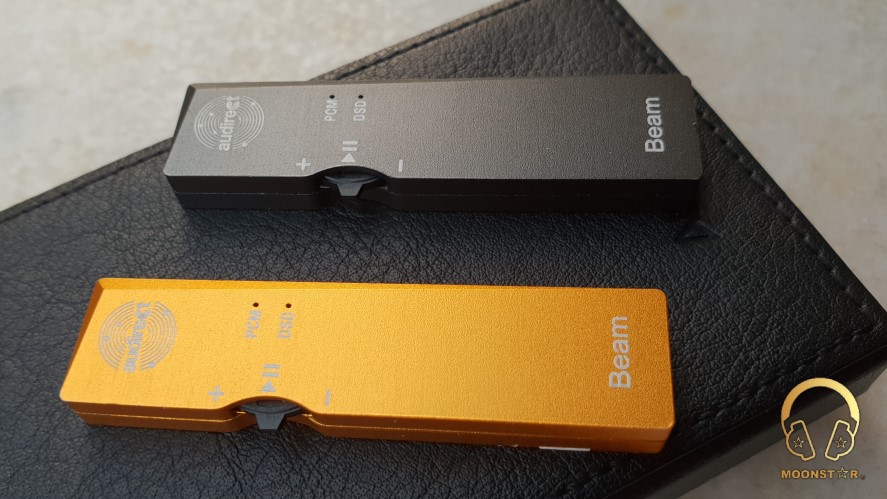
Hardware & Software:
The Audirect Beam DAC & AMP is a pretty small device with some nice hardware specs.
DAC & AMP Section:
The Audirect Beam DAC/AMP sports the ES9018 SABRE HiFi SoC (System on a Chip), which is made by the company ESS Technology Inc. This HiFi type System-On-Chip (SoC) integrates the Digital to Analog Converter (DAC) and the headphone amplifier with an output switch.
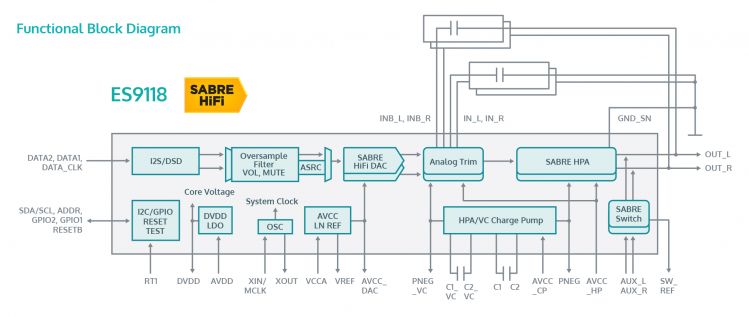
The ES9118 HiFi SoC is supporting the ESS patented 32-bit HyperStream architecture to deliver up to 125 dB SNR and -112 dB Total Harmonic Distortion plus Noise (THD+N). It also supports some of the popular high resolution and lossless audio formats including FLAC, ALAC, AIFF and WAV.
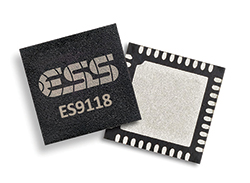
Supported Audio Formats:
- The Audirect Beam supports the following formats that I have tested out during this review;
- DSD (64/128), FLAC, ALAC, APE, WAV, AAC, OGG, MP3, WMA
Drivability:
The onboard amplifier, which is integrated to the ES9018 SoC is has a output rated of 49mW into 32Ω and 2Vrms into 600Ω. It was capable to driver my Sony SA3000 and Audio-Technica ATH-M50 to very loud volume levels.
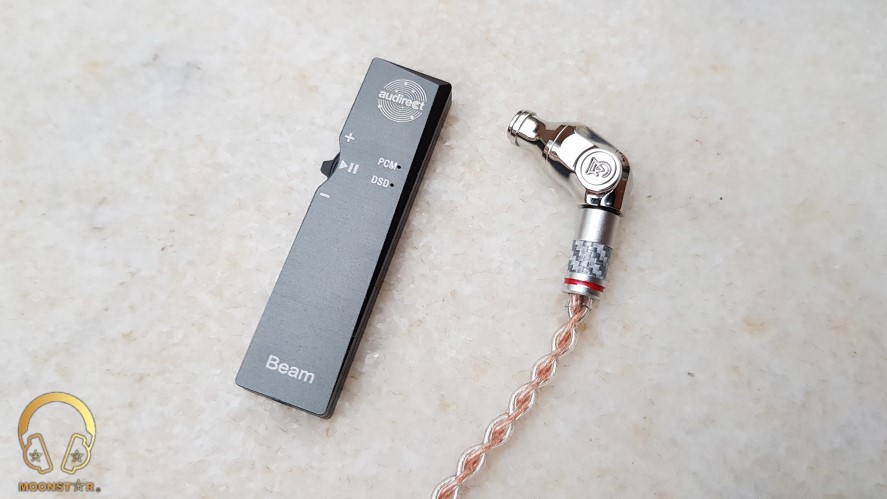
Battery Draining:
The Audirect Beam shows less battery drain than my old Fiio E10K, the first generation of Audioquest Dragonfly 1.0, Dragonfly Black and Red.
Hissing:
One of the remarkable and pretty surprising features of the Audirect Beam is the clean sound output. The Beam sounds pretty clean with some of my sensitive IEM’s like the iBasso IT04 and the DUNU Falcon-C.
Equipments used for this review:
- DAC’s : Audirect Beam, Audioquest Dragonfly Black
- IEM’s : Vsonic Ares, iBasso IT04, Campfire Audio Polaris, Final E5000, FLC8N
- Earbuds : Simphonio Dragon2+, Astrotec Lyra Collection
- Headphones : Audio-Technica ATH50M, Sony SA3000
- Source : Meizu 7 Pro, Samsung Galaxy S9 Plus, iPad Air 2, Dell Inspirion 5521
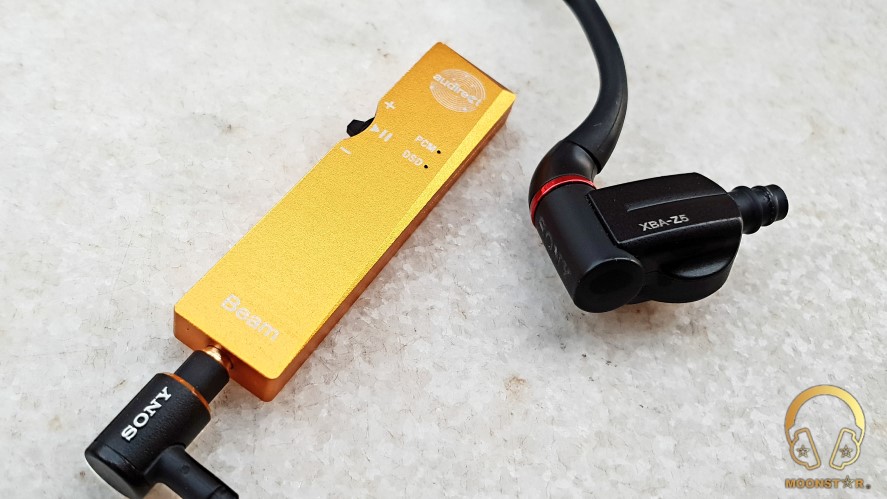
Albums & tracks used for this review:
- Liquid Tension Experiment 2 – Acid Rain (Spotify)
- Opeth – Damnation (Tidal Hi-Fi)
- Megadeth – Sweating Bullets (Flac 16bit/44kHz)
- Metallica – Sad bu True (Flac 24bit/96kHz)
- Jehan Barbur – Yollar (Spotify)
- Minor Empire – Bulbulum Altin Kafeste (Spotify)
- London Grammar – Interlud (Live) (Flac 24bit/44kHz)
- Laura Pergolizzi – Lost On You “Live at Harvard and Stone” (Tidal Hi-Fi)
- Dire Straits – Money for Nothing (DSD 64)
- Otto Liebert & Luna Negra – The River (DSF) – Binaural Recording
- GoGo Penguin – Fanfares (Tidal Hi-Fi)
- Adam Taylor – Colour to the Moon (Flac 16bit/44kHz)
- Casey Abrams – Robot Lover (Tidal Hi-Fi)
- Lorde – Team (Flac 24bit/48kHz)
- Tom Player – Resonace Theory “Album” (Tidal Hi-Fi)
- Deeperise feat. Jabbar – Move On (Spotify)
Sound Analysis:
The Audirect Beam has a coherent and well balanced smooth and slightly bright tonality, which sounds in general very musical.
I have burn-in the Audirect Beam for approx. 150 hours before I wrote this review.
Please note that this is a low budget DAC and all my comments about the sound quality are in consideration of this price range.
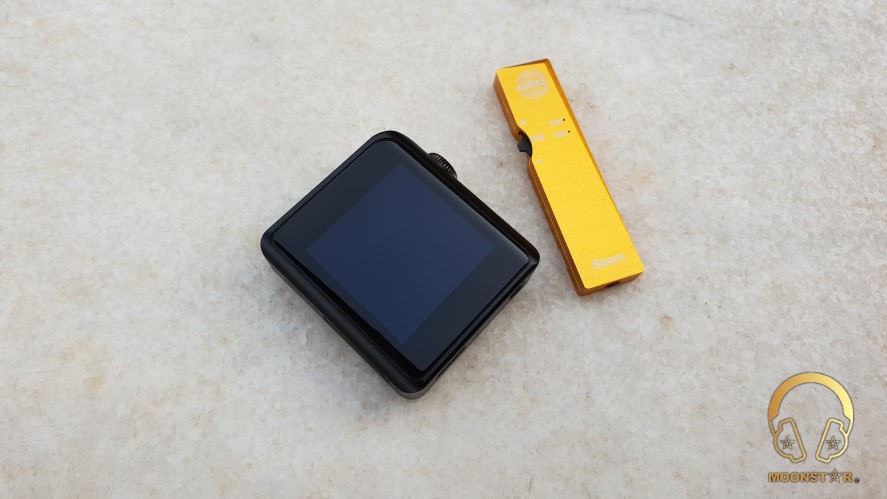
Bass:
The bass presentation of the Audirect Beam is pretty fast, controlled and linear. The sub-bass extension is moderate and the quantity is on an average level. Even if I wanted a bit more sub-bass depth, this is a situation that challenges the limits of this DACAMP on the basis of efficiency.
The Audirect Beam is pretty good in terms of speed and control that defines the detail level of the bass. The bass presentation of the Beam is more in a punchy than boomy character and there is no muddiness or interference while presenting some bass heavy genres like Trance, EDM, etc.
The bass quantity will satisfy most users with the exception of people who prefer presentation on a bass-head level.
Midrange:
The midrange is the focus point of the Audirect Beam. This device is very successful in the midrange especially for its size and its price, with its slightly bright, relative neutral and transparent, clean and clear midrange presentation.
Vocals:
The Audirect Beam pretty successful with female vocals, because of the relative prominent, detailed and well extended upper-midrange presentation. A noticeable plus point of the Beam is the ability, not to be harsh with its relative transparent vocal presentation. I liked the Beam with both mezzo-soprano and soprano level female vocals, because of the pretty good transition and control, form the top to the end and vice versa.
When it comes to male vocals; the Audirect Beam shows a deep, clean and transparent presentation, without any remarkable interference and muddiness. The source is important in this manner, because if you use an IEM with a neutral tuning, the Beam will sound slightly thinner than normal with male vocals.
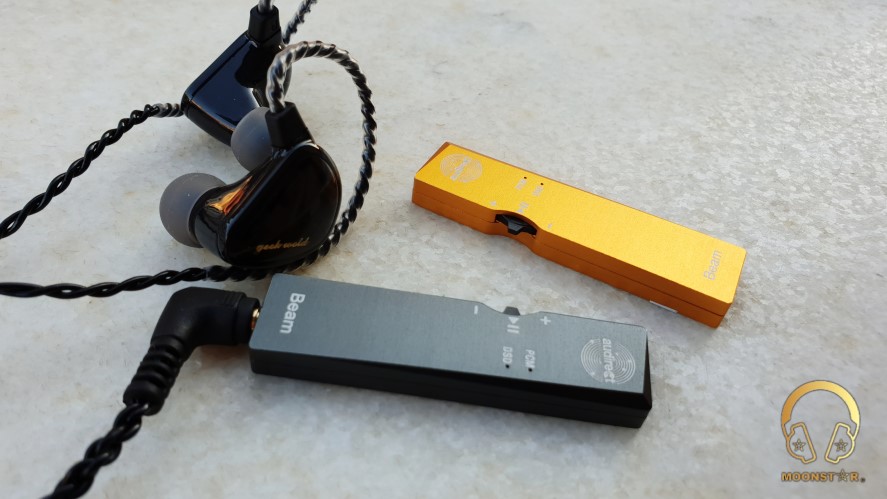
Instruments:
The Audirect Beam shows a slightly bright, close to neutral, natural and clear instrument tonality. The Beam represents instruments in a detailed and airy way, with good separation and definition. Pianos sounding slightly bright and pronounced, acoustic guitars are natural, transparent and fast, violins are slightly bright and doesn’t sounding harsh, but there is missing only a hint or warmness with violas.
Upper Midrange and Treble:
The upper midrange of the Audirect Beam is fairly pronounced and controlled, without any remarkable interference and sibilance. Instruments like piano, violin or cymbals sounding pretty fast and controlled.
The treble range of the Audirect Beam is not very upfront or too recessed and sounds quite neutral and clear. The treble extension is at a moderate level, but this makes a fatigue free listening possible.
The treble quantity and intension is pretty good and is able to catch the treble speed of some fast treble intensive genres like metal music, which is in my opinion a noticeable advantage. This ability makes a good detail rendering possible. The Beam is pretty successful in terms of control, emphasis and extension with instruments like side flutes while rising from the upper-midrange to the treble range. The Beam will also satisfy those who like a good detail rendering while listening to genres like electronic music.
Soundstage:
The Audirect Beam offers a very spacious and airy stage, where the instruments have enough space to spread out. This feature is also avoiding any conflicting and disorganizing of the instruments.
The soundstage has slightly less depth than its wideness, but don’t get me wrong, because the soundstage is by no way shallow. One other noticeable attribute of the soundstage is arrangement of instruments, which performs better in the horizontal direction than in the vertical.
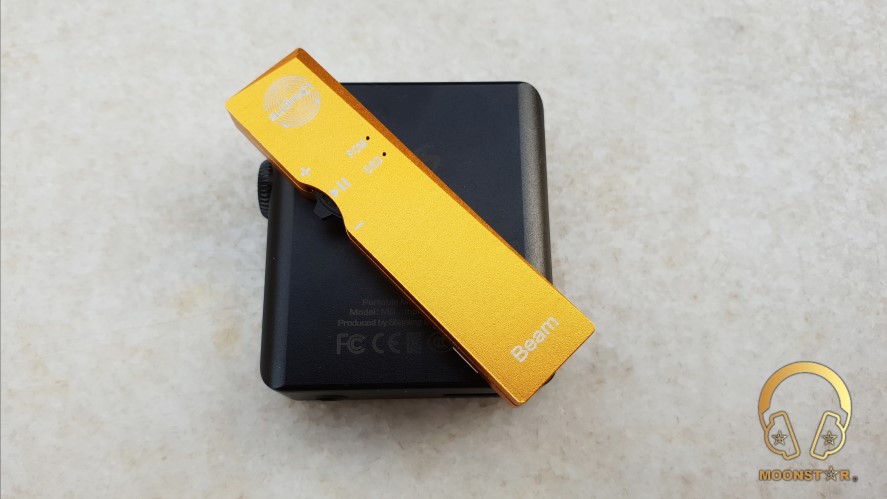
Comparison:
Audirect Beam versus Audioquest Dragonfly Black:
Both the Audirect Beam and the Audioquest Dragonfly Back are very capable devices in a price range between $100,00 – 150,00 USD.
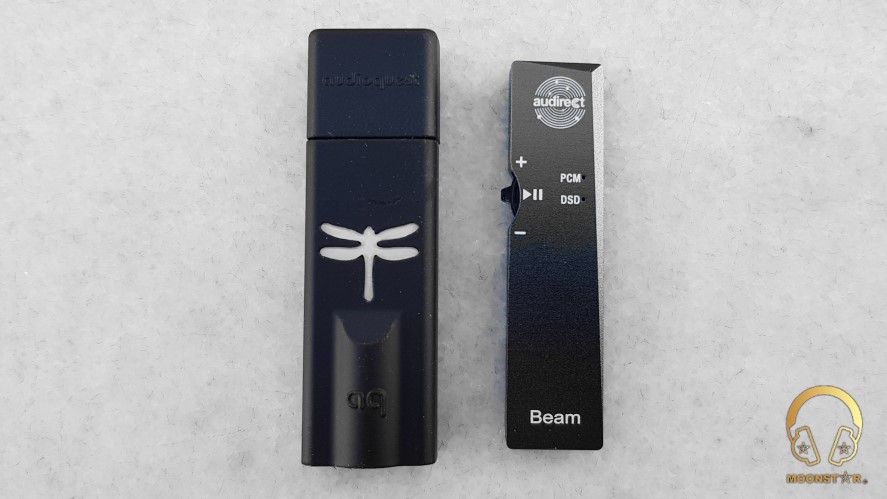
The Dragonfly Black has warmer tonality with an additional emphasis at the lower end.
The bass of the Audirect Beam sounds more linear and balanced than those of the Dragonfly Black, which has additional impact. The sub-bass of the Dragonfly Black are showing more depth and rumble, but have slightly less extension and definition compared to the Beam.
The bass of the Audirect Beam is faster and has better layering than those of the Dragonfly Black.
The midrange of the Dragonfly Black is warmer and ticker than those of the Audirect Beam, which has a more natural and transparent presentation. The Dragonfly Black sounds very delicious with male vocals, while the Audirect Beam has the upper hand for female vocals because of its brighter tonality and upper midrange emphasis.
Instruments like Bass Guitars and Drums sounding better with the Dragonfly Black, while the Audirect Beam sounds more natural with instruments like violins, side flutes etc.
The Audirect Beam has a brighter, more pronounced top end, which is superior to the Audioquet Dragonfly Black in terms of treble extension and control. The Beam sounds also slightly more detailed than the Dragonfly Black that is otherwise an already good performer at this price range.
When it comes to soundstage performance, both have an above average soundstage wideness, where the Beam has a slightly wider presentation. The soundstage depth is for both devices on a moderate level.
Conclusion:
The Audirect Beam is probably one of the best sounding portable DAC/AMP’s in its price tag. The great sound, tiny size and lower power consumption makes it to a nice option for those who are not satisfied with the performance of their phone, tablet and onboard soundcard of their Laptop or Desktop PC.
Pos and Cons:
- + Great Sound (especially the midrange area)
- + Good detail retrieval
- + Low to none hissing
- + Lots of OTG Cables (inclusive Apple lighting)
- + Plug and Play capability for Android and IOS
- – No battery means additional battery drain for the source

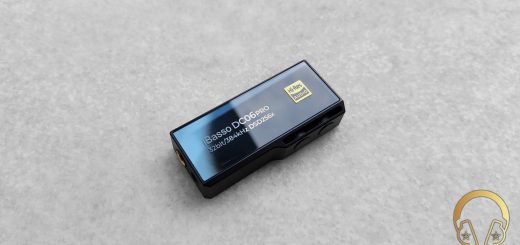
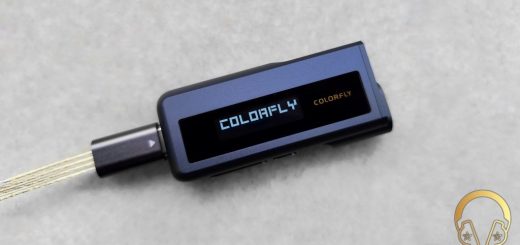









Both have a pretty neutral tonality, while the Dragonfly Red sounds thinner but more energetic. The Red shares more detail, while the Beam sounds more musical. The Red has a bigger soundstage but the price to performance ratio of the Beam is better in my opinion.
Hi there i am kavin, its my first time to commenting anyplace,
when i read this piece of writing i thought i
could also make comment due to this sensible article.